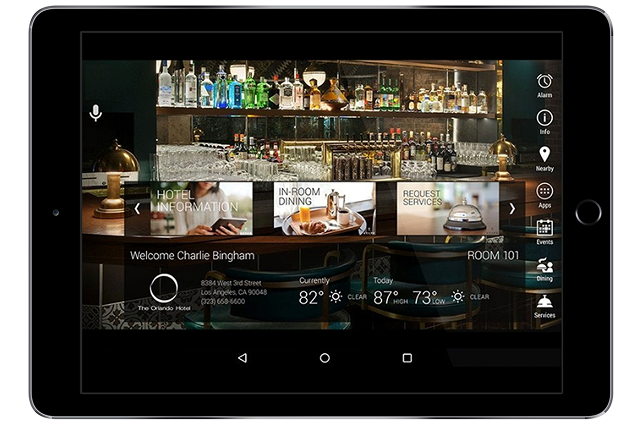As one of my favorite jokes says, each millennial should ruin a startup, record a podcast, and burn out. Maybe, that won’t be your scenario, but you must have witnessed how contemporary success stories drive masses of entry-level entrepreneurs to at least try that startup idea and launch an app. It promises many inspiring things – like profit generation, positive change expectations, and effective empowerment of the existing business.
However, many people abandon the plan to launch an app once they witness problems in an oversupply of mobile solutions and realize their inability to explain why they fail. At the same time, these reasons are rather objective: either the quality of unsuccessful apps is poor or the essential stages to launch mobile app were violated.
To fix the first issue, you need a team of professionals. But to cure the lack of knowledge about the accurate process to launch an app, you can just read this post.
This comprehensive instruction will help to launch mobile app FOR REAL. It contains 25 steps that can guide you from the raw startup idea to the post-launch maintenance activities of your app:
1. Problem identification
2. Idea choosing
3. Validation
4. Industry research
5. User persona
6. Competitor analysis
7. Positioning
8. Distinguishing main strengths in an app
9. Picking pricing model
10. Branding
11. Landing page publication
12. Completing pre-launch
13. Mockup
14. UI/UX design
15. Coding
16. Beta-testing
17. Gathering tools for data collection
18. App release
19. Rating check
20. Adjusting keywords
21. Publishing early testimonials
22. Working with social media accounts and communities
23. Media outreach company
24. App promotion
25. Reengaging activities
Let’s check how to make each this step right. Rely on the experience of digital geniuses to make your app idea work and impress the world!
STAGE 1. Accurate planning
Step #1. Identify the problem your app will solve
Many developers not just forget to start from problem identification – they disregard this step completely. By doing this, they make one of the biggest mistakes ever: they face the failure of an overall initiative to launch an app.
That’s why we recommend each young entrepreneur to consider problem-solving approach seriously. Before you let your mind captured by your brilliant ideas or start working on the product itself, calm yourself down by asking, “Which customer pain I want to solve?”. This simple mental exercise can awesomely direct your efforts from making another useless mobile app to something worthy and needed by people.
Once you concentrate on launching a mobile solution (and not just an empty app), even the atmosphere in which you launch mobile app changes. It gifts an additional shot of inspiration, increased motivation, and a sense of purpose – both to yourself and your team.
While identifying customer pain, stick to the basic principle of thinking big and acting small. That will help you accumulate all the necessary experience and suffer from minimum losses. And prepare you to make a really significant change.
Step #2. Find a good idea
Once you’ve defined the customer pain you will solve, it’s time to brainstorm ideas. Collect and weigh as many thoughts as possible to make sure the one you’ll choose is the best of the best.
Here’s the way how to make it carefully:
- At the very beginning, try to gather as many bad ideas as possible. Aim at reaching 100 points in your list of terrible solutions to that sharp problem you’ve noticed on Step #1. Don’t limit your imagination – usually, the great idea appears somewhere between 20th and 80th position. Just don’t stop exploring and creating!
- To get some extra inspiration while stuck, investigate forums and thematic groups in social media. Don’t be shy to start conversations with people and test your ideas (or ask strangers for theirs) while talking to those facing the identified pain.
When you finally picked a couple of great ideas with which you can launch mobile app, scrutinize them by asking these questions:
- Which actions can lead your product to come into the market?
- What makes your solution special?
- Why should people download your app?
- Are you able to develop a sustainable business plan to make it work?
- Is it easy to steal and/or copy your idea? How can you protect yourself from this harm?
If your idea can stand such interrogation under duress, you can move forward!
Step #3. Validate your idea

To complete the planning stage, create a low-tech prototype you can touch and test. You don’t have to make it detailed and tech-savvy! That’s a technological representation of an app purpose you’ve created in your head, nothing more. On this stage, you just need to check whether everything you’ve identified in your idea checklist can be reflected in the form of a digital solution.
STAGE 2. Conducting research
Step #4. Investigate the industry
Before you dive into the development stage and actually launch mobile app, learning the market context is none the worse for. To conduct industry research, play with Google Keyword Planner and AppAnnie tools. SEO and PPC specialists frequently use them, and there’s no surprise – these instruments provide you with useful insights into what people search in Google and which keywords are relevant for your specific market niche. Lucky you, that’s the basic information to launch an app too.
Step #5. Create a user persona
In addition to understanding the market, it’s essential to know your customers well. Spend a fair amount of time to learn their demographical traits, tastes, typical behaviors, and attitudes. All these data will make your users attracted by the product you’ll create for them.
After you’ve collected all the relevant information, create the user persona. This method makes you think of an ideal client – the one who contains the most typical features and reveals the most common patterns you’ve identified.
Here’s the process of how to work on user persona:
- Include raw data: age, location, specification, relationship status, etc;
- Draft a typical bio to create the story of your user persona;
- Add sections with wishes, needs, and common fears to capture the emotional portrait;
- Include relevant skills and specifications;
- List favorite brands, food, and places (or any other details relevant for your research).
Step #6. Analyze competitors
Finally, you won’t get the full picture of the context without checking the behavior and business tactics of your main rivals. The easiest way to search for your key competitors is to read Google articles dedicated to the top 10 companies in your niche. Your direct competitors are those several ones that appear the most frequently.
While researching your competitors, ask them these questions:
-
- Who are their target users?
- Why are they so popular?
- Which exact keywords make their ranking that high?
- What do customer reviews say?
- What did they look over (and so, my app can improve)?
Collecting these answers will make you confident about the cheerful prospects of your future success!

STAGE 3. App launch marketing plan
Step #7. Develop Positioning Statement
So, once you’ve convinced yourself and your market that an idea created in your head should see the world, it’s time to start marketing! The proper start is to create your positioning statement that addresses three main questions:
- Who will use my app?
- What advantage does it bring to these people?
- Why is this app more valuable to my users than all the other apps available?
Once you’ve elaborated your answers to these questions, all the marketing steps you’d take in the future should empower that statement – again and again. That will contribute to your brand awareness.
Remember: your task is to create something special, valuable, and different from all those millions of apps available in AppStore. Dedicate maximum attention to creating your Unique Value Proposition – that’s the phrase that will hook your target audience and convince them to stay with you. And yes, never deceive your positioning statement ever after.
Step #8. Define your main strengths
The completion with other apps will be cruel, so you need to spend some time designing the list of all the counterarguments you will use to fight them all.
For useful insights, refer to these two sources of information:
- Competitor’s reviews. Learn the key problems other apps reaching your target customers have experienced – and solve them in your solution.
- Marketing channels missed. If your competitors don’t use YouTube, blogs, or Product Hunt – well, you know what does it mean for you, right?
Also, pay attention to the most common pricing models, the level of customer satisfaction, and the frequency and quality of version updates. On all these weaknesses, you can build your power.
Step #9. Choose the best pricing model
Depending on the aims of your app and the expectations your target customers carry, you can use different approaches to asking for money in your app. The most common model is “freemium,” which means that users are granted free access to the limited version of a product, but its full functionality is available upon subscription. Alternatively, you can go for free, subscription-based, or in-app purchases models.
To make the final decision, consider the size of your audience: if it’s a niche market, you can risk and launch an app that is downloaded for money. If your task is to reach maximum people, that’s possible with a free solution only.
Step #10. Develop branded screenshots and visuals for marketing

Complete pre-marketing activities by developing the brand book of your app. It doesn’t mean designing a comprehensive mobile marketing campaign – but you need to notify about the app release date and construct the overall brand awareness from scratch.
Never miss the chance to tell the story of your app. Design various beautiful visuals with the emotional appeal in different formats – you can use them as materials for press, social media banners, creative elements in the e-mail marketing campaigns, etc. Also, pay attention to the promo video. With it, you can both introduce your product and reengage customers over and over again (in social media posts, on a landing page, and in the description on AppStore).
Complete the package you’ll send to influencers and press. In its visual part, it should include a logo, an icon, screenshots, and the promo.
STAGE 4. Pre-Launch Activities
Step #11. Publish a landing page for your app
Even though your efforts are mostly connected with the need to launch a mobile app, don’t underestimate the potential of a website in empowering your success. Generally, a landing page can help you in several ways:
- It facilitates checking whether your idea is really profitable and viable,
- It enables collecting e-mails of your first clients and communicating with them,
- It’s useful for lead generation,
- It’s effective in showcasing all the product advantages, customer reviews, and press references.
To create a landing page, register your domain, fill all the relevant information, and add a submission form for your visitors to leave their e-mails. To make it quick, use the services like Instapage, Wix, LaunchRock, and Unbounce. Also, don’t forget to link your landing page with services for data collection and analytics – you won’t regret having direct access to Google Analytics and Optimizely.
Use your landing page to pitch your app idea, share private beta versions to test your product on its development stage, communicate its positioning and strengths, and promote it on a post-launch stage!
Step #12. Complete all the preparations to app launch campaign
At this stage, you complete all the warming up before diving into the hard development. Use all the information you’ve gathered to complete the pre-launch checklist!
- Complete the product description page. Use all the information you’ve gathered on the previous steps to create a catching text that describes your app to clients. It should work for the perfect advertising of your app.
- Determine the main influencers in your industry and establish communication with them. Don’t underestimate the role of networking and communication – especially if you just entered the market with the new product.
- Craft app promotion campaign. Create the list of advertising activities you’ll launch in various marketing channels – social media, communication with bloggers, traditional advertising platforms, and the way your website will work.
- Prepare a press kit. Create a directory that contains the most powerful information about your app (both visual and textual), the list of all the platforms where you’re present (website, forums, social media), and your contact information. Send it to press representatives.

STAGE 5. Development
Step #13. Create the mockup
So, everything is ready to start developing your product! For one thing, create a basic sketch of your product. Omit using mixed colors and including sophisticated heavy details – all you need to do is to outline the main blocks and their connections. Aim at creating a general perspective with the basic interactions and overall app flow on this step.
Here’s the process of creating a mockup:
-
- Write down basic app functionality and user interface features your digital solution must have
- Create a series of screens for each element
- Draft requirements for UI – include general elements first, then add some essential details
- Add supporting notes with explanations where needed
The mockup is like a pencil sketch, not a complete picture. Prefer blue-sky thinking about general concepts to down-to-earth back-breaking detail-drawing. You’re just preparing yourself.
Step #14. Apply graphic design
That’s where your maximum attention to the details is the main requirement. Your final task is to show how the app will look – from point to point, in a complete color palette, and containing all the layouts and UI elements. That’s the step where each centimeter and each pixel matter.
And that’s a high time to invite UX/UI professional. Only this specialist can complete this task as well as your app needs. Don’t skimp and save here – the major part of your success depends on the beauty and usability of UI/UX design specifically.
Step #15. Code
This is another hard-working step that is a prerequisite to the appearance of your app. Similar to the case of the design, the importance of coding calls for the best programming specialist you can find.
Think of the number of platforms you’re aiming at. You can launch an app for iOS or Android (good native coding platforms Xcode and Swift). Alternatively, you can invest in cross-platform solutions – here, pay attention to React Native, Flutter, and Xamarin as useful tools. Finally, check out Parse.com and Firebase – they are great backend-as-a-service instruments to work with data assets.
Don’t forget to check the guidelines of the platforms you’ve chosen – to ensure the submission process will go smoothly and bug-free.
Step #16. Beta-test
The more features and platforms your app needs, the greater the importance of beta-testing. Precisely, it’s necessary to fix as many problems as possible before you launch your mobile app – otherwise, the whole product can alienate your target customers once and for long. So, always check your progress through both internal and external testing of your app. Reach your fans, friends, and even friends of your friends to collect all the data and testimonials needed to ensure you’ll celebrate your launch, not save your solution from losses and bugs. Try TestFlight, a solution that allows beta testing of your app both internally and externally.
Of course, all this doesn’t mean that beta-testing will save your product from ALL the glitches you’ll notice after the release. You just need to make sure you’ve done everything possible to prevent those bugs and mistakes that appear in the early development stages.
Step #17. Prepare technical tools to leverage audience and collect data on your app

We highly recommend developing in-app messaging in advance. This will help you collect precious feedback – both on the beta-testing step and long after the launch.
Also, connect services that will help you work with analytics right before launching. For this purpose, the best picks are Crashlink (to work with crashes), Google Analytics (to measure engagement), and Fastlane (for better automation).
Aaaand… are you ready for the next long-expected step?
STAGE 6. Launch mobile app
Step #18. Your time to launch an app came!

It’s already Step #18, but that finally happened. It’s time to celebrate launching an app!
The vital task here is to let everybody you can reach know the news and open the champagne to celebrate this happening with your team!
STAGE 7. Post-launch activities
Step #19. Keep track of your rating
In the first couple of weeks, don’t lose your sense of reality and constantly check your performance. For this, rely on prepared KPIs and work with the metrics on a daily basis.
In the beginning, get ready to face high volatility in your rankings. Simply get track of rating, reviews, the number of downloads, and retention rate. This objective information will help you see the bigger picture and provide a sustainable background for the first updates.
Step #20. Immediately adjust your keywords (if needed)
Among the prior changes on the post-launch stage, prepare to revise the keywords. Having a tremendous impact on your ranking in both AppStore and Google Play, keywords, if changed on time, can improve your position dramatically.
Among the fields to revise, pay attention to the app’s title, the list of meta keywords, and meta description. The make all the difference.
Step #21. Get early testimonials
For the post-launch stage, it’s all about reviews. You should provoke, collect, and process them. At the same time, we recommend not only checking the reviews left by your customers but also adjust your description with the best examples. Doing this can increase trust to you and boost popularity – especially if you get somebody like Leonardo di Caprio among your reviewers!
Just don’t be shy and ask influencers and celebrities for the review by yourself! Both critics and fans contribute to your success. Besides, they attract new users who judge your product by reading reviews and scanning descriptions – so update the review list and description info as often as it’s needed to make it perfect!
Step #22. Develop social media accounts and reach existing online communities
Among the most important areas to develop on the post-launch stage, pay attention to users who gather in social media, blogs, and forums. Link your social accounts to your landing page so that your audience can reach you on both platforms. Invest in social media and content marketing – but do it wisely. Be active in thematic Facebook groups and on Instagram. Talk to your customers and search for immediate insights into your market. And also, keep an eye on influencers in your industry and develop strategical partnerships.
There are so many ways to use social media for your app. Don’t neglect their potential!
Step #23. Work on media outreach strategy
Along with working on social media, it’s crucial to establish beneficial communication with the press. In this context, rely on the value of your product and your unique selling points. By building relations with journalists and bloggers, communicate your story to build sincere connections. To find your audience, use Google News, Reverse Google Image Search, and Help-A-Reporter-Out (HARO).
And never forget to show them your awesome brand book!
Step #24 Promote your app
Marketing strategy constantly supplements your app launch – but it gets the solemnity on the post-launch stage. You can do many things here – and reviewing them deserves a separate post.
That’s why we list you just some ideas for you to investigate and get more target customers:
-
- Participate in the curated lists,
- Apply paid advertising,
- Try App Store Optimization (ASO),
- Use push notification,
- Use A/B testing.
Step #25 Reengage your users

Finally, you should never forget about the people who already chose to stay with your app. Entertain them with new content and fresh updates. Keep an eye on their behavior. Remain the perfect app for their needs.
And, of course, carefully listen and instantly react to the feedback you receive from your fans. From the very beginning, you initiated an app to solve their problem – so, at the end of the app launch journey, you should always stick to this purpose to not only keep your ratings high but also ensure you create value.
Final note: How much does it cost to launch an app?
If we reached our aim of writing this post, the task of launching an app should not seem hard for you anymore. The only thing to cover is the revealing the amount of resources you’ll need to start.
This answer depends on many factors: the app type you want to develop, the exact number of platforms, design sophistication, databases used, the appearance of adds-on, etc. With the different combinations of these factors, the sum can range from $10,000 to $500,000.
So, it’s always better to contact the development team and get the real price from them. Compare different teams to make the final choice.
We wish good luck with your app launch – and let you open many bottles of champagne for success!





